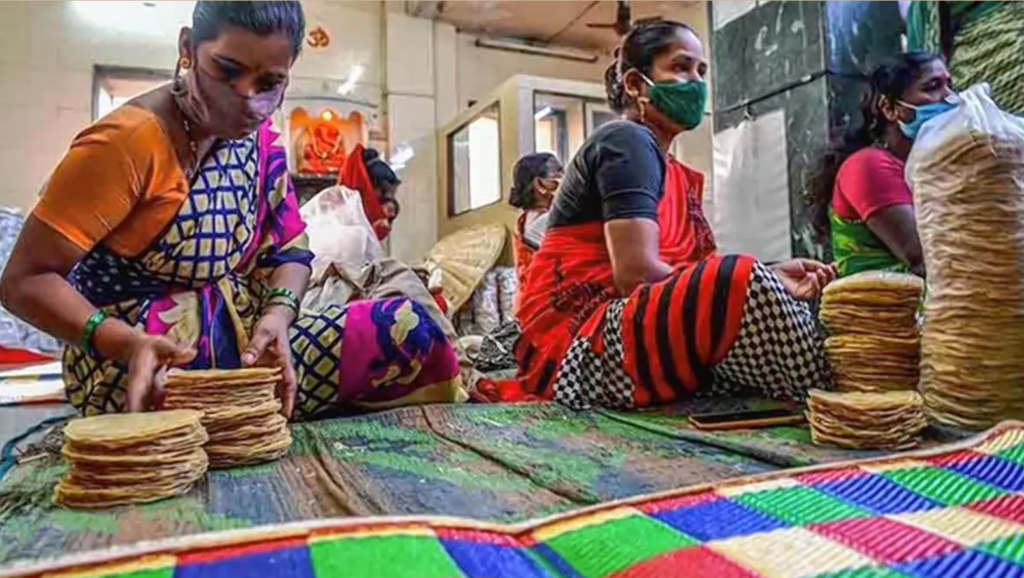The Mudra Yojana, now completing its 8 years, incidentally, happens to have contributed immensely to inclusion of several communities that have traditionally been underrepresented as an entrepreneur
Economic equity has been often considered as an objective to strive towards – and concrete policies have often been adopted guided by equity considerations. An equally important and related aspect pertains to inclusivity–that is, ensuring that everyone is included in the growth process. This is why successive governments have often talked about “inclusive growth” or “inclusive development”.
The Mudra Yojana, now completing its 8 years, incidentally, happens to have contributed immensely to inclusion of several communities that have traditionally been underrepresented as an entrepreneur. Needless to say, that ensuring equal opportunity is ethically and morally just for any society – but it also brings with it several economic benefits as it makes the work environment more empathetic, empowering and collaborative resulting in more productivity & innovation.
There is also the case that a more diversified set of entrepreneurs will result in breaking down of any barriers or any form of discrimination on any dimension of candidates thereby leading to a healthier labour market.
Unfortunately, the banking system in India is typically risk averse and often requires collateral requirements or other formal conditions such as physical assets or regular wage employment which have prevented many from the poor and marginalized communities to access formal sources of credit to improve their standards of living. This system stifled innovation, creative destruction and also the risk-taking appetite of thousands of entrepreneurs who could have emerged as job creators in their own right.
Take the example of a rickshaw driver who often rents their rickshaws and pay rents to the owner. These economic rents are often excessive, especially when compared to the cost of capital associated with the purchase of a rickshaw. The rickshaw driver could have simply borrowed money and repaid the loan through their earnings in an effort to improve their disposable income on a monthly basis. There are several other small examples of people who used to work at food stalls and other unorganized workplace deciding to take a Mudra loan and to set up their own small food stalls in an effort to improve their income and move up the economic ladder.
Mudra was perhaps the first program at a large scale that demonstrated to those in the bottom half of India that even they were welcomed by India’s banks – particularly public sector banks that were nationalized with the objective of serving the poor. It was only with Mudra that these banks did, in fact end up banking the unbanked. Even if we leave aside the knock-off effects of Mudra on formalization and deepening of access to formal financial services, the transformative impact of the program on the beneficiaries is real through countless testimonials.
The scheme was introduced duly after recognizing the potential gap in India’s microfinance and banking sectors where many who could benefit from such loans often lacked collateral to meet the formal eligibility requirements for most financial intermediaries. To solve this problem, the government backstopped these loans thereby encouraging bankers to take on the risks associated with these loans. The loans have been divided into three categories based on the need for finance and stage in maturity of the business. These are Shishu (loans up to ₹50,000/-), Kishore (loans above ₹50,000/- and up to ₹5 lakh), and Tarun (loans above ₹5 lakh and up to ₹10 lakh).
In addition, government recognized the underrepresentation of women, SC, ST and OBC communities among Indian entrepreneurs. Their limited presence in entrepreneurship today could pose as a challenge for the ability of their future generations to undertake such activities. It was therefore important to encourage people from these communities to undertake entrepreneurship and simultaneously work towards ensuring access to equal opportunities. Equality of status and of opportunity is an essential feature of Indian constitution and is mentioned explicitly in the preamble.
Additionally, lack of women entrepreneurs typically results in workplace environment being governed by policies that may not be conducive enough for female participation in workforce. It was therefore encouraging that about 68% of Mudra accounts under the scheme belonged to women entrepreneurs. SC/ST and OBC categories account for a total of 51 per cent of all Mudra accounts. Therefore, from a representation standpoint there was a specific focus of the program to encourage underrepresented communities to avail these collateral free loans in an effort of improving their economic prospects.
The essence of any business is the ability to find capital which can then be put to use for productive purposes by combining other factors of production. Marginalized communities, especially those who are economically disadvantaged often find it difficult to meet unforeseen expenses or make discretionary purchases. For them to find savings and take the necessary risk associated with entrepreneurship has relatively higher barriers.
A good example from recent memory comes of a girl who had managed to set up a business and her parents were against her undertaking any form of outside economic activity. She ended up featuring on Shark Tank India’s first season sending a message across to several young women that this is India’s entrepreneurship moment – and they should not shy away from it. The episode, however, illustrates how the barriers to entrepreneurship are real and pervasive in society – especially if you are a woman.
This is precisely why a scheme like Mudra was important as it addressed a key constraint for the Indian economy, particularly the MSMEs that often struggled to find structured finance to undertake businesses. In many ways, Mudra opened up the doors of Indian banks to the real India for the first time and with the government backing these loans it ensured that the scheme secured the unsecured thereby allowing banks to bank the unbanked. Needless to say, that in the end it led to funding the erstwhile unfunded.
Article Credits: Business Line
